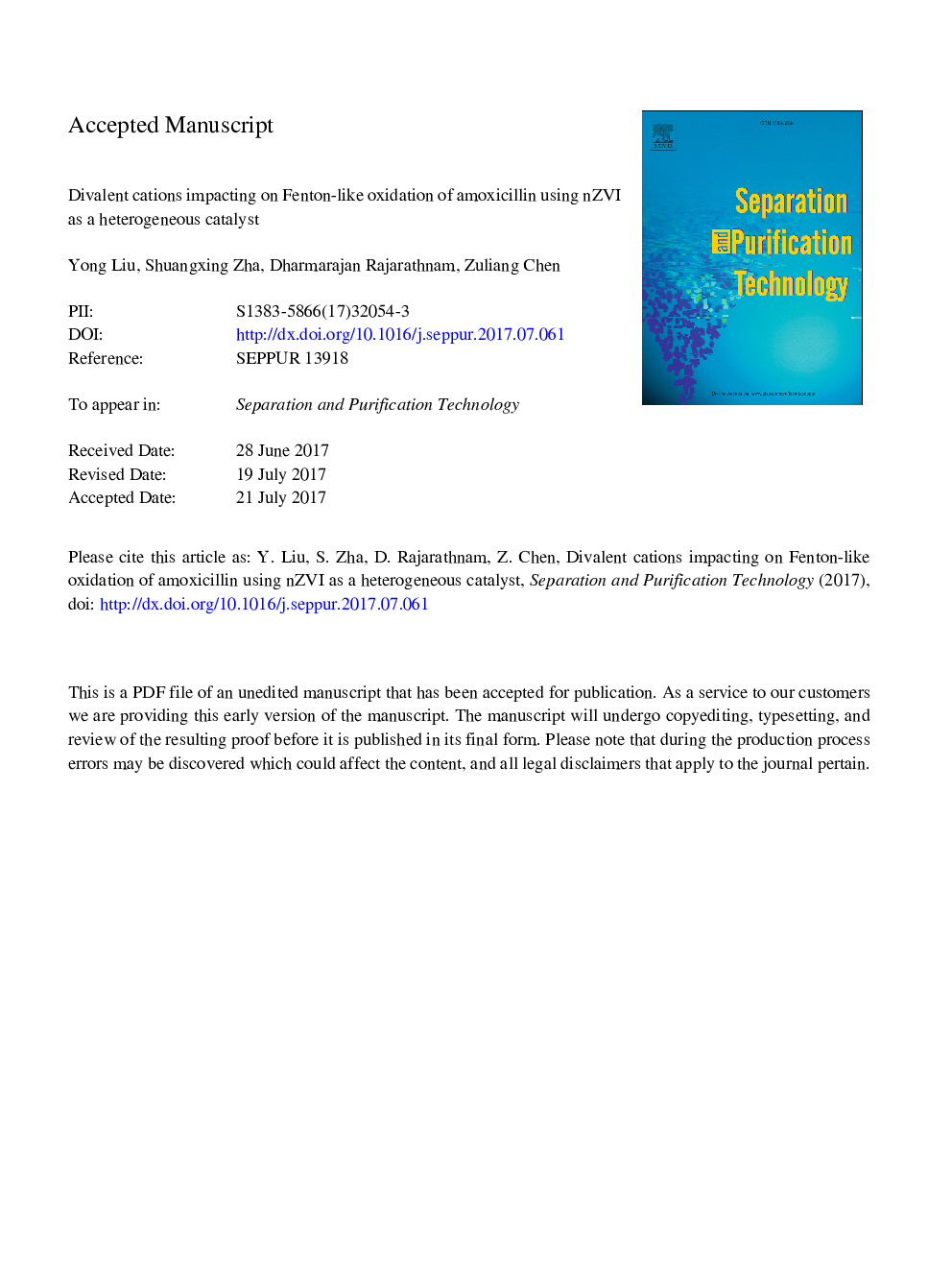| Article ID | Journal | Published Year | Pages | File Type |
|---|---|---|---|---|
| 4989832 | Separation and Purification Technology | 2017 | 21 Pages |
Abstract
In this study, the effect of Mg2+ and Cu2+ on the oxidative degradation of Amoxicillin (AMX) by heterogeneous Fenton-like oxidation using nanoscale zero-valent iron (nZVI) as a catalyst was investigated. It was found that about 90.0% and 54.7% of AMX was degraded in the presence of 1Â mM Cu2+ and 1Â mM Mg2+ ions respectively, while 60.2% of AMX was removed by the control sample. Scanning electron microscopy (SEM) indicated that nZVI aggregated visibly after degradation of amoxicillin. X-ray photoelectron spectrometer (XPS) confirmed the reduction of Cu2+ to Cu0 by Fe0 on nZVI's surface to form similar Fe/Cu bimetal to accelerate the degradation of AMX, and magnesium oxides or hydroxides formed on the surface of nZVI to restrain the removal of AMX. X-ray diffraction (XRD) demonstrated the existence of Fe0 in fresh nZVI and the corrosion aggregation of nZVI to form iron oxides or hydroxides after reaction. Kinetics studies demonstrated a pseudo first-order kinetics model for the oxidative degradation with the observed maximum Kobs as 0.0867Â minâ1 in the presence of 1Â mM Cu2+. The reason for this enhanced bimetallic catalytic activity is discussed.
Related Topics
Physical Sciences and Engineering
Chemical Engineering
Filtration and Separation
Authors
Yong Liu, Shuangxing Zha, Dharmarajan Rajarathnam, Zuliang Chen,
